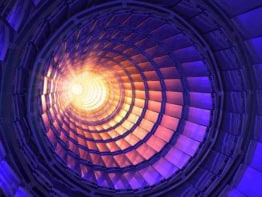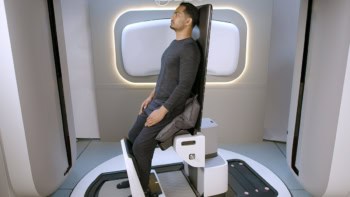In 1911 the New-Zealand-born physicist Ernest Rutherford published a paper that was to revolutionize science. Rutherford’s famous alpha-particle scattering experiment transformed our understanding of the atom and it inspired the new areas of physics including the theory of quantum mechanics.
The pioneering work was carried out at the University of Manchester where Rutherford held the Chair of Physics for 12 years. To mark the centenary of these landmark experiments, the university hosted a special week-long conference in August 2011. The event was organized by the UK’s Institute of Physics, which publishes Physics World.
In this short film, Physics World journalist James Dacey reports from the conference where he caught up with two of the keynote speakers. First, Dacey meets the University of York physicist, David Jenkins, who describes how Rutherford’s experiments overthrew the prevailing picture that atoms were solid building blocks of nature.
In this discussion, Jenkins talks about how Rutherford’s work has led to some important practical applications, including big advances in the field of medicine. “Understanding the nucleus and radioactivity has led to many diagnostic techniques for medicine like positron emission tomography, or the radiotherapy cancer treatments that people receive.”
For a different take on Rutherford’s discovery, Dacey also met physicist John Schiffer of Argonne National Laboratory, who has been an active nuclear researcher since completing his PhD in 1954. Schiffer explains how, after visiting Rutherford’s laboratory, Niels Bohr was able to develop a coherent theory of quantum mechanics based on the idea of a nuclear atom.
Dacey also encourages Schiffer to take his imagination beyond fundamental physics by asking what might have happened if Rutherford had not made his discovery in 1911. In a fascinating response, Schiffer speculates that other scientists would have been unlikely to make the discovery before the onset of the First World War. Continuing this line of thought, Schiffer believes that the discovery of fission may then have been delayed until after the Second World War. “Would the first use of nuclear weapons have been in a third world war? You can write science fiction books about that,” he says.
And it is not just professional physicists who are celebrating the centenary of Rutherford’s discovery. Manchester’s Museum of Science and Industry is also hosting a special exhibition until the end of October, which provides an overview of Rutherford’s work and his legacy in the city of Manchester. Dacey takes a trip to the museum to meet the exhibit’s curator, Cat Rushmore. Rushmore gives Dacey a guided tour of the exhibit, which includes a number of artefacts from Rutherford’s lab such as his desk and chair and a letter to Rutherford from Bohr describing how much he admired the Manchester laboratory.



